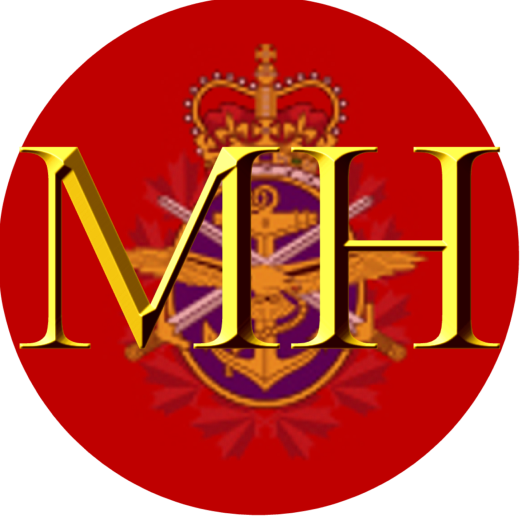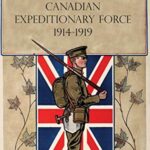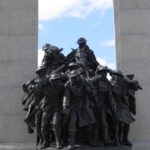The Birth of NATO and Canada’s Role: The Shield Against Cold War Threats
The North Atlantic Treaty Organization (NATO) stands as one of the most significant military alliances in modern history, conceived in the shadow of World War II and born amid the mounting tensions of the emerging Cold War. It was an unprecedented collective security arrangement that sought to prevent future conflicts on the scale of the two world wars and to deter the aggressive expansion of the Soviet Union. Among the founding nations of NATO was Canada, a key player in the alliance’s creation and an important contributor to its development, administration, and operations. The Canadian role in NATO reflected not only the country’s deep ties to Britain and the United States but also its commitment to safeguarding democracy in the face of Cold War adversities.
As the Cold War solidified into a long-standing confrontation between the Western powers and the Soviet-led Eastern Bloc, NATO became the military framework within which Western Europe was defended from potential Soviet aggression. At the heart of this system were the shared ideals of democratic governance, collective defense, and the protection of the rule of law. In this essay, we will explore the origins of NATO, Canada’s contributions to its formation, the structural and administrative complexities of the alliance, and the pivotal role NATO played in Europe during the Cold War.
The Origins of NATO: Post-War Uncertainty and the Soviet Threat
In the aftermath of World War II, Europe lay devastated. Entire cities had been reduced to rubble, economies were in shambles, and political instability threatened the fragile peace that had been won at such a terrible cost. While the immediate goal of the Western allies was reconstruction through initiatives like the Marshall Plan, it became clear that the political and military vacuum left by the war could provide an opening for Soviet expansion into Western Europe.
The Soviet Union, which had suffered immense losses during the war, emerged as a major world power with significant influence in Eastern Europe, where it had installed communist regimes loyal to Moscow. By 1947, the ideological divide between East and West had sharpened, and former wartime allies were now adversaries. The threat posed by the Soviet Union, with its growing nuclear capability and military presence in Eastern Europe, created an acute sense of urgency among Western nations. The Berlin Blockade of 1948, in which the Soviet Union sought to cut off all access to West Berlin, brought the simmering tensions to a boiling point. Though the blockade was broken by the Western Berlin Airlift, it underscored the need for a formal military alliance to deter further Soviet aggression.
It was in this tense atmosphere that the concept of a collective defense agreement—where an attack on one member would be considered an attack on all—began to take shape. The United States, recognizing its own strategic interest in preventing Soviet domination of Europe, became the driving force behind this new alliance. Canada, too, saw the need for such an organization, not only as a means of protecting Europe but also as a way to ensure North American security.
Canada’s Role in the Creation of NATO
Canada’s involvement in the creation of NATO was driven by a combination of security concerns and a desire to play a more active role on the international stage. In the aftermath of World War II, Canada had emerged as a middle power with significant influence in global diplomacy. Having contributed immensely to the war effort, both in Europe and in the Pacific, Canada was determined to maintain its standing in the new post-war order. The establishment of NATO offered a way for Canada to both protect its interests and contribute to the broader defense of Western democracy.
Canadian diplomats, particularly Lester B. Pearson, played a pivotal role in shaping the framework of the North Atlantic Treaty. Pearson, who would later be awarded the Nobel Peace Prize for his role in resolving the Suez Crisis, was a strong advocate for a cooperative international approach to security. He and other Canadian officials pushed for a collective defense agreement that would not only deter Soviet aggression but also provide for economic cooperation and political unity among the member states.
On April 4, 1949, twelve nations, including Canada, signed the North Atlantic Treaty in Washington, D.C. The treaty’s cornerstone was Article 5, which committed each member to consider an armed attack against one member as an attack against all. This principle of collective defense was revolutionary, signaling the first peacetime military alliance that included both North American and European nations. Canada’s signature on the treaty marked its commitment to a long-term defense strategy against the growing Soviet threat, positioning the country as a central figure in Cold War diplomacy.
The Structure and Administration of NATO
NATO was not simply a military alliance; it was also an organization of immense bureaucratic and diplomatic complexity. Its structure was designed to ensure that all member nations, regardless of size or military power, had a voice in the decision-making process. The North Atlantic Council (NAC), NATO’s principal political decision-making body, was composed of representatives from all member states and was responsible for setting overall policy and strategy. The NAC met regularly at different levels—ambassadors, foreign ministers, and even heads of state—ensuring that key decisions were made with input from all member governments.
At the military level, NATO’s supreme authority was the Supreme Allied Commander Europe (SACEUR), a position traditionally held by a senior U.S. military officer. The SACEUR oversaw NATO’s operational forces and was responsible for the defense of Western Europe. The military structure was divided into a series of regional commands, each responsible for a different part of the alliance’s territory. This decentralized system allowed NATO to maintain a flexible and responsive defense posture, capable of countering Soviet threats in a variety of geographic regions.
The International Staff and the International Military Staff provided the administrative backbone of NATO, coordinating activities among the member states and ensuring the smooth functioning of day-to-day operations. The organization’s headquarters, located first in Paris and later in Brussels, became the nerve center of the alliance, where military, political, and diplomatic representatives worked together to formulate strategies for the defense of Europe.
NATO’s Role During the Cold War: Defending Western Europe
NATO’s primary mission throughout the Cold War was the defense of Western Europe from Soviet invasion or subversion. The Soviet Union’s massive military presence in Eastern Europe, coupled with its nuclear arsenal, posed a constant threat to the stability of Western Europe. The Warsaw Pact, formed in 1955 as a Soviet response to NATO, formalized the military alignment of the Eastern Bloc and further heightened tensions.
During the 1950s and 1960s, NATO’s defense strategy was built around the concept of deterrence. The threat of overwhelming retaliation, particularly through the use of nuclear weapons, was seen as the best way to prevent Soviet aggression. The United States stationed nuclear missiles in Western Europe, and NATO developed detailed contingency plans for the rapid deployment of forces in the event of a Soviet attack. Canadian forces, stationed primarily in West Germany as part of NATO’s forward defense, were an integral part of this strategy. Canada’s 1st Canadian Division, based in West Germany, was on constant alert, prepared to respond to any Warsaw Pact incursions across the Iron Curtain.
The 1960s also saw NATO’s transition from a reliance solely on nuclear deterrence to a more flexible approach known as flexible response. This strategy, which emerged during the tenure of U.S. President John F. Kennedy, allowed NATO to respond to Soviet aggression with a range of options, from conventional military action to limited nuclear strikes, rather than relying on an all-or-nothing nuclear retaliation. Canada supported this shift, contributing forces to both conventional and nuclear elements of NATO’s defense posture.
Canada’s contributions were not limited to military deployments. Throughout the Cold War, Canadian diplomats worked tirelessly to strengthen NATO’s political cohesion, helping to resolve tensions between member states and advocating for greater economic cooperation within the alliance. Canada also played a key role in NATO’s development of its defensive infrastructure, particularly the construction of airbases, radar stations, and communication networks throughout Western Europe.
One of the most critical moments in NATO’s Cold War history came during the Cuban Missile Crisis of 1962. Though the crisis was centered on the Western Hemisphere, the implications for NATO were profound. Soviet missiles in Cuba were seen as a direct threat to NATO’s ability to respond to aggression in Europe, and the crisis tested the alliance’s unity. Canada, under Prime Minister John Diefenbaker, faced internal political challenges over its response, but ultimately stood by its NATO allies, recognizing the broader implications of the crisis for global security.
NATO’s Post-Cold War Role and Canada’s Continuing Contributions
The end of the Cold War in 1991 marked the beginning of a new chapter for NATO. With the collapse of the Soviet Union and the dissolution of the Warsaw Pact, the immediate threat of a Soviet invasion of Western Europe disappeared. However, NATO remained a critical element of European and North American security, adapting to new challenges such as ethnic conflicts, terrorism, and the proliferation of weapons of mass destruction.
Canada continued to play a prominent role in NATO’s post-Cold War operations, contributing troops to peacekeeping missions in the Balkans during the wars in Yugoslavia and providing forces for NATO’s missions in Afghanistan after the September 11, 2001 terrorist attacks. Canadian soldiers fought alongside their NATO allies in some of the most dangerous regions of Afghanistan, demonstrating Canada’s enduring commitment to the alliance.
Conclusion: The Legacy of NATO and Canada’s Role
NATO has evolved from a Cold War military alliance into a global security organization capable of addressing a wide range of threats, from conventional warfare to modern terrorism. Canada’s role in the creation of NATO, and its ongoing contributions to the alliance, reflect the country’s deep commitment to collective security and international cooperation. The structure, administration, and strategic development of NATO over the decades highlight the complexity and importance of maintaining a unified defense posture in the face of ever-changing global threats.
For Canada, NATO has been a vehicle through which it could project its influence, protect its interests, and contribute to global peace. In the post-Cold War world, as new challenges continue to emerge, Canada’s role in NATO remains as vital as ever, a testament to the enduring principles of collective defense and international collaboration that have shaped the alliance from its inception.



